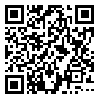1. Stewarta1 SE, Rosariob MC, Brown TA, Carter AS, Leckman JF, Sukhodolsky D. Principal Components Analysis of Obsessive Compulsive Disorder Symptoms in Children and Adolescents. Biol Psychiatry. 2007; 61(3): 285-91. [
Crossref]
2. Markarian Y, Larson MJ, Aldea MA, Baldwin SA, Good D, Berkeljon A, et al. Multiple Pathways to Functional Impairment in Obsessive-Compulsive Disorder. Clin Psychol Rev. 2010; 30 (1): 78–88. [
Crossref]
3. Weissman MM, Bland RC, Canino GJ, Greenwald S, Hwu HG, Lee CK, et al. The Cross National Epidemiology of Obsessive Compulsive Disorder. The Cross National Collaborative Group. J Clin Psychiatry. 1994; 55: 5-10.
4. Sasson Y, Zohar J, Chopra M, Lustig M, Iancu I, Hendler T. Epidemiology of Obsessive-Compulsive Disorder: A World View. J Clin Psychiatry. 1997; 58 (12): 7-10.
5. Nestadt G, Bienvenu OJ, Cai G, Samuels J, Eaton WW. Incidence of Obsessive-Compulsive Disorder in Adults. J Nerv Ment Dis. 1998; 186 (7): 401-6. [
Crossref]
6. Ayuso-Mateos JL. Global Burden of Obsessive-Compulsive Disorder in the Year 2000. WHO. 2013:1-10.
7. Kenézloi, E, Nemoda Z. Genetic Factors in Obsessive-Compulsive Disorder: Summary of Genetic Studies. Psychiatr Hung. 2010; 25 (5): 378-93.
8. Hodgson RJ, Rachman S. Obsessional-Compulsive Complaints. Behav Res Ther.1997; 15: 389-95. [
Crossref]
9. Sánchez-Meca J, López-Pina JA, López-López JA, Marín-Martínez F, Rosa-Alcázar AI, Gómez-Conese A. The Maudsley Obsessive-Compulsive Inventory: A Reliability Generalization Meta-Analysis. Int J Clin Health Psychol. 2011; 11: 473-93.
10. Assareh M, Tabrizi R, Firouzkouhi-Moghaddam M, Rakhshani T. Epidemiological Survey on the Status of Obsessive-Compulsive Disorder among School-Age Children in Iran. Iran J Health Sci. 2015; 3(4): 1-7. Available from: URL:http://jhs.mazums.ac.ir.
11. Sweet M. Being a Caring Doctor may be bad for you. BMJ. 2003: 326-55. [
Crossref]
12. Chandavarkar U, Azzam A, Mathews CA. Anxiety Symptoms and Perceived Performance in Medical Students. Depress Anxiety. 2007; 24(2): 103-11. [
Crossref]
13. Sulkowski ML, Mariaskin A, Storch EA. Obsessive-Compulsive Spectrum Disorder Symptoms in College Students. J Am Coll Health. 2011; 59(5): 342-8. [
Crossref]
14. Sher KJ, Martin ED, Raskin G, Perrigo R. Prevalence of DSM-III-R Disorders among Nonclinical Compulsive Checkers and Noncheckers in a College Student Sample. Behav Res Ther. 1991; 29(5): 479-83. [
Crossref]
15. Bryńska A, Wolańczyk T. Epidemiology and Phenomenology of Obsessive-Compulsive Disorder in Non-Referred Young Adolescents: A Polish Perspective. Eur Child Adolesc Psychiatry. 2005; 14(6): 319-27. [
Crossref]
16. Valleni-Basile LA, Garrison CZ, Waller JL, Addy CL, McKeown RE, Jackson KL, et al. Incidence of Obsessive-Compulsive Disorder in a Community Sample of Young Adolescents. J Am Acad Child Adolesc Psychiatry. 1996; 35(7): 898-906. [
Crossref]
17. Apter A, Fallon TJ Jr, King RA, Ratzoni G, Zohar AH, Binder M, et al. Obsessive-Compulsive Characteristics: from Symptoms to Syndrome. J Am Acad Child Adolesc Psychiatry. 1996; 35(7): 907-12. [
Crossref]
18. Richardson M, Abraham C, Bond R. Psychological Correlates of University Students' Academic Performance: A Systematic Review and Meta-Analysis. Psychol Bull. 2012; 138(2): 353-87. [
Crossref]
19. Rizvi AH, Awaiz M, Ghanghro Z, Jafferi MA, Aziz S. Pre-Examination Stress in Second Year Medical Students in a Government College. J Ayub Med Coll Abbottabad. 2010; 22(2):152-5.
20. Zhang X, Wang H, Xia Y, Liu X, Jung E. Stress, Coping and Suicide Ideation in Chinese College Students. J Adolesc. 2012; 35(3): 683-90. [
Crossref]
21. Ghoreishi A, Nikmanesh N. Prevalence of Obsessive-Compulsive Disorder and its Relationship with Anxiety Symptoms in Students of Zanjan Universities (2009). J Kermanshah Univ Med Sci. 2014; 18(5): 303-12.
22. Baer L, Minichiello WE. Behavior Therapy for Obsessive-Compulsive Disorder. In: Jenike MA, Baer L, Minichiello WE, eds. Obsessive-Compulsive Disorders. St Louis: Mosby. 1998: 337-67.
23. Steketee GS, Frost RO, Rheaume J, Wilhelm S. Cognitive Theory and Treatment of Obsessive-Compulsive Disorder. In: Jenike MA, Baer L, Minichiello WE, eds. Obsessive-Compulsive Disorders. St. Louis: Mosby. 1998: 368-99.
24. Alsobrook JP, Pauls DL. The Genetics of Obsessive-Compulsive Disorder. In: Jenike MA, Baer L, Minichiello WE, eds. Obsessive-Compulsive Disorders. St. Louis: Mosby. 1998: 276-88.
25. Rauch SL, Whalen PJ, Dougherty D, et al. Neurobiologic Models of Obsessive Compulsive Disorder. In: Jenike MA, Baer L, Minichiello WE, eds. Obsessive-Compulsive Disorders. St. Louis: Mosby. 1998: 222-53.
26. Black DW, Gaffney G, Schlosser S, Gabel J. The Impact of Obsessive-Compulsive Disorder on the Family: Preliminary Findings. J Nerv Ment Dis. 1998; 186: 440-2. [
Crossref]
27. Calvocoressi L, Lewis B, Harris M, et al. Family Accommodation and Obsessive-Compulsive Disorder. Am J Psychiatry. 1995; 152: 441-3. [
Crossref]


.png)




